One of the delights of foraging is realizing just how much food is –quite literally –beneath your feet. It can be exhilarating to go out into the field or forest with a basket in hand, and return with free berries, nuts, and more greens than you can shake a stick at.
Watch The Video
But if you’re not a whiz in the kitchen, you may feel inhibited in your foraging journey. Berries can be eaten raw on lots of treats, of course, and nuts are easy to crack and munch, but what in the world do you do with all those different greens? There are only so many cold salads that a body can take, and in the case of many wild greens, flavors are often a bit too strong for the treatment normally given a typical iceberg salad.
Though you can dress them a dozen different ways, I believe a salad is the most boring thing you can possibly do with wild greens. And I take that as a good thing! The opportunities afforded a creative cook with a huge haul of foraged flora are pretty much limitless, once you look past the bottle of ranch.
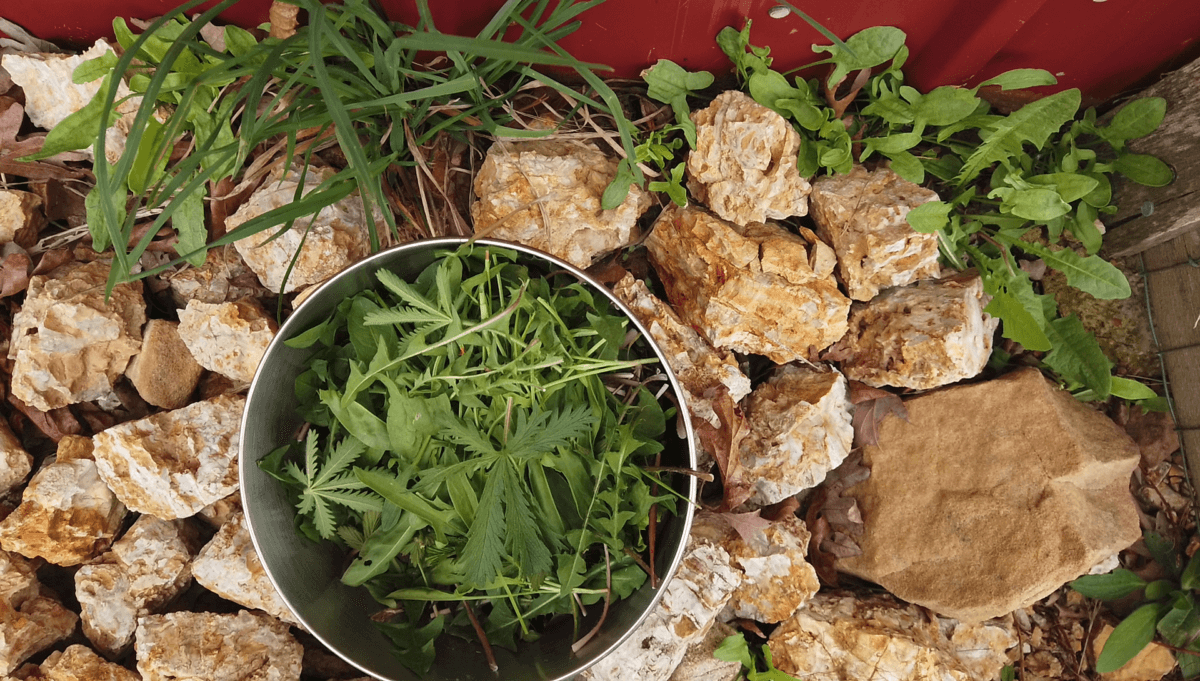
So in this article, I hope to give you a helpful handful of ideas on how to cook the domestic and wild greens you bring into your kitchen. And though these methods are excellent for wild greens, they can work perfectly well for domestic greens, too.
Related Post: Foraging for Wild Spinach
General Tips for Cooking Wild and Domestic Greens
The following tidbits of information will be old hat to anyone who starts a regular habit of cooking greens (a highly recommended endeavor).
- Submerge your foraged greens in a big bowl of water when you bring them in from the field. It will keep them from wilting, and is a water-saving way to get them washed. After swishing them around and getting any dirt and bugs loose, dump the water onto your garden, get a fresh bowl, and give them a second rinse.
- Wrap tiny greens in a bigger leaf to hold them in place and make mincing or julienning them a breeze.
- Don’t be afraid to use oil or butter when cooking greens. The fats aid in nutrient absorption and digestibility, and make them tastier.
- Prepare for the amount to shrink exponentially. As anyone who brings in a heaping basket of spinach already knows, what looks like enough to feed an army can cook down for a party of two. If your dish needs more bulk, try mixing the greens with sautéed cabbage and onions to extend them.
- On that topic, add salt AFTER the greens have reduced, so they aren’t over seasoned.
- Tongs make flipping and sautéing greens a breeze.
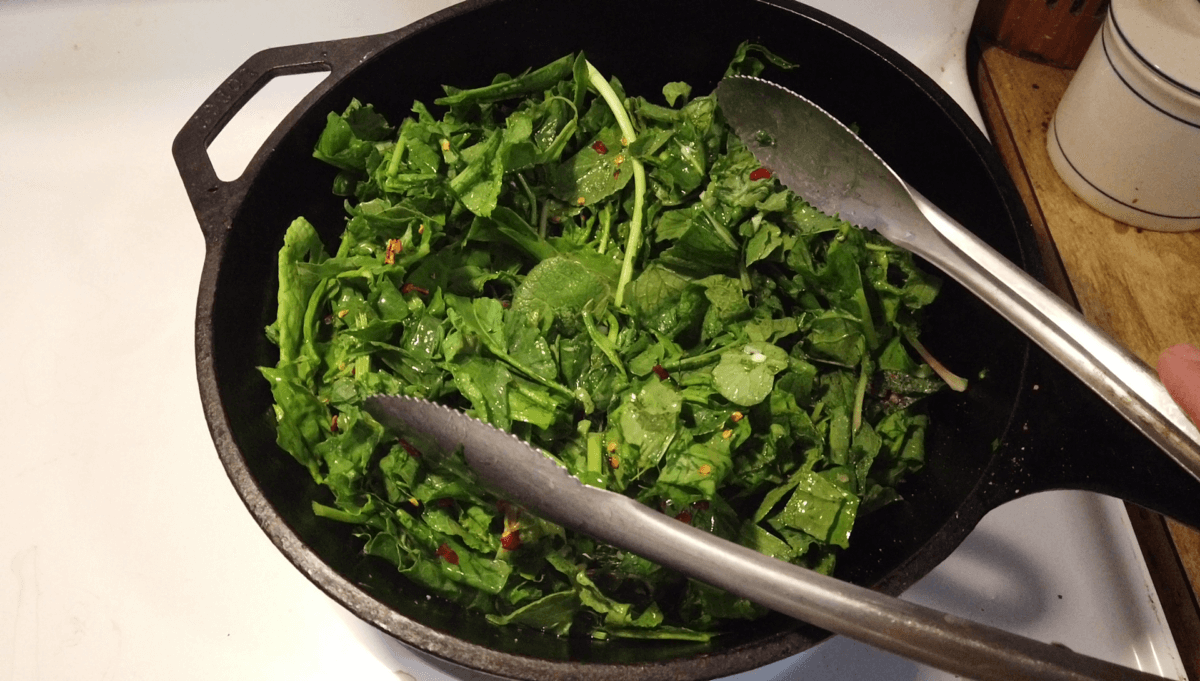
Related Post: Foraging for Wild Strawberries
Different Wild Greens Cooking Methods
Here are some of my favorite non salad ways to treat the wild greens I pluck from the forests and fields. None of them are really given as whole recipes. Also, I’m well aware that I use a lot of cayenne and garlic, and that may not be your style. Additionally, wild greens are the wild card in any dish. Some are more fibrous than others, some have a higher water content, and they all defy being perfectly constrained into any recipe.
You’ll have to embrace a little of the unknown when you bring foraged food into the kitchen. With that in mind, these recipes are intended to be an inspiration for you as you learn. Whether you have a ton of wild greens, or just a few that need to be supplemented with garden contributions, this series of leaf treatments can give you a good launching point for your own kitchen masterpieces.
Added to Whatever’s Cooking
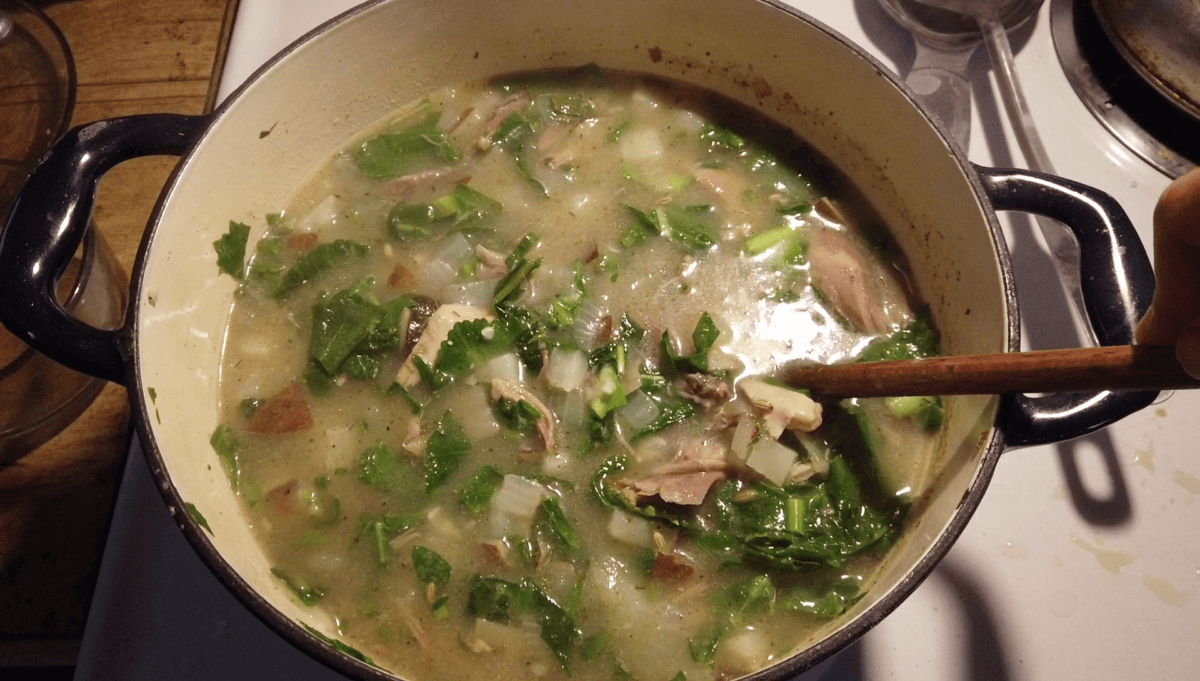
Greens can easily slip into more dishes than you may realize. That pot of soup on the stove? A handful of chopped greens added in the last 10 minutes gives both a pop of color and nutrition. Your pasta? Sauté diced greens and garlic with the noodles before you add the sauce, and you’ll add a Michelin star or two to your home cooking. Making an omelet or frittata? You already know that greens and cheese are begging to be added. I could go on, but you get the point. Even if the foraging pickings are too slim to make them a whole dish in their own right, greens can be added to almost every meal. Your taste buds and good health will thank you.
Stir-Fried Dishes
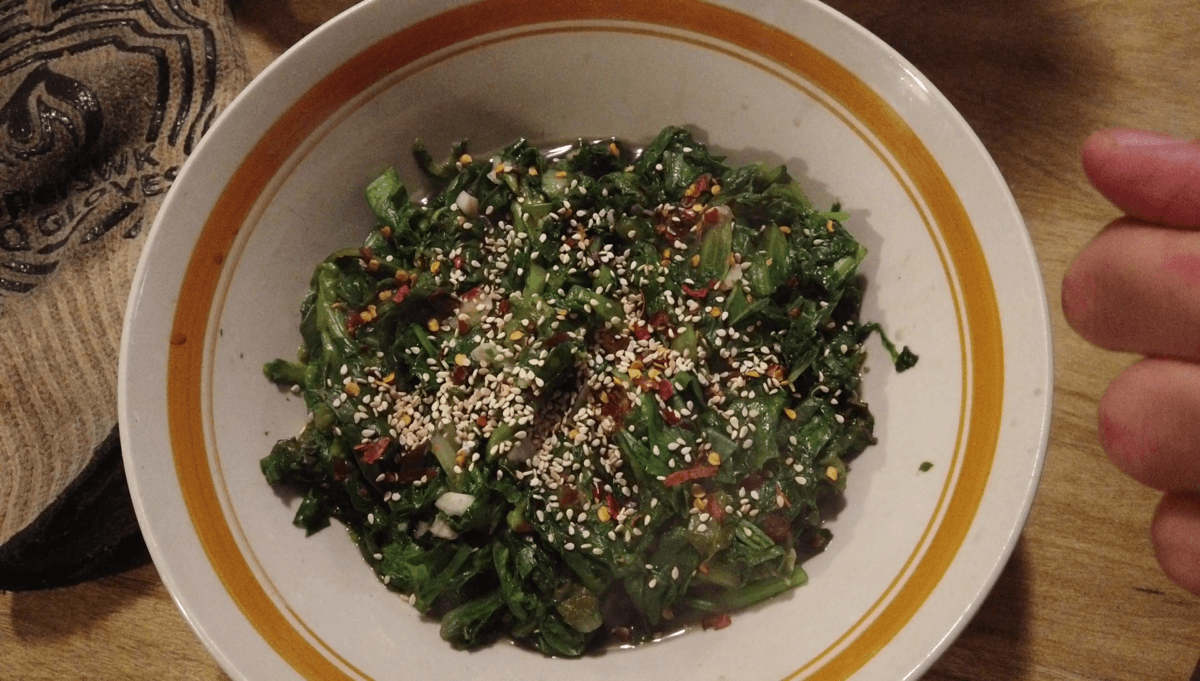
I lament all cookbooks that treat vegetables with the following line: “Boil until tender-crisp, season, and serve.” Boiling does have its purpose, but for most greens (pokeweed being a notable exception), boiling turns them into a depressing, gray-green mush of regretful texture and flavor, and leaves many of the nutrients behind in the cooking water.
For a just-as-easy, but far tastier alternative, stir-fried greens are the answer. Quick to prepare, toothsome, colorful, and full of flavor when spiced, greens shine when given a quick whirl in a hot wok or frying pan. The addition of oil in the pan adds a much-needed element of fat to the dish, and the hot, quick-cooking both keeps most of the nutrients in the leaf where they belong and preserves their verdant hue.
For a simple stir-fry, heat a pan to medium-high, add a tablespoon of oil, minced garlic to taste, and a tablespoon of minced ginger, then sauté briefly until fragrant. Add as big a heap of chopped greens as you can comfortably fit in your pan. They’ll quickly reduce in the searing temperature. Stir and cook, coating the greens with the flavored oil. When they have wilted enough, but are still bright green, add soy sauce to taste, and stir a few more times. Turn off the heat, and (if desired) season with hot pepper flakes or fresh sliced cayenne, a drizzle of sesame oil, and a decorative sprinkle of sesame seeds. With a pan of greens cooked this way, even the most ardent greens-haters will be drifting in the kitchen to find out what that amazing smell might be.
Greens Patties
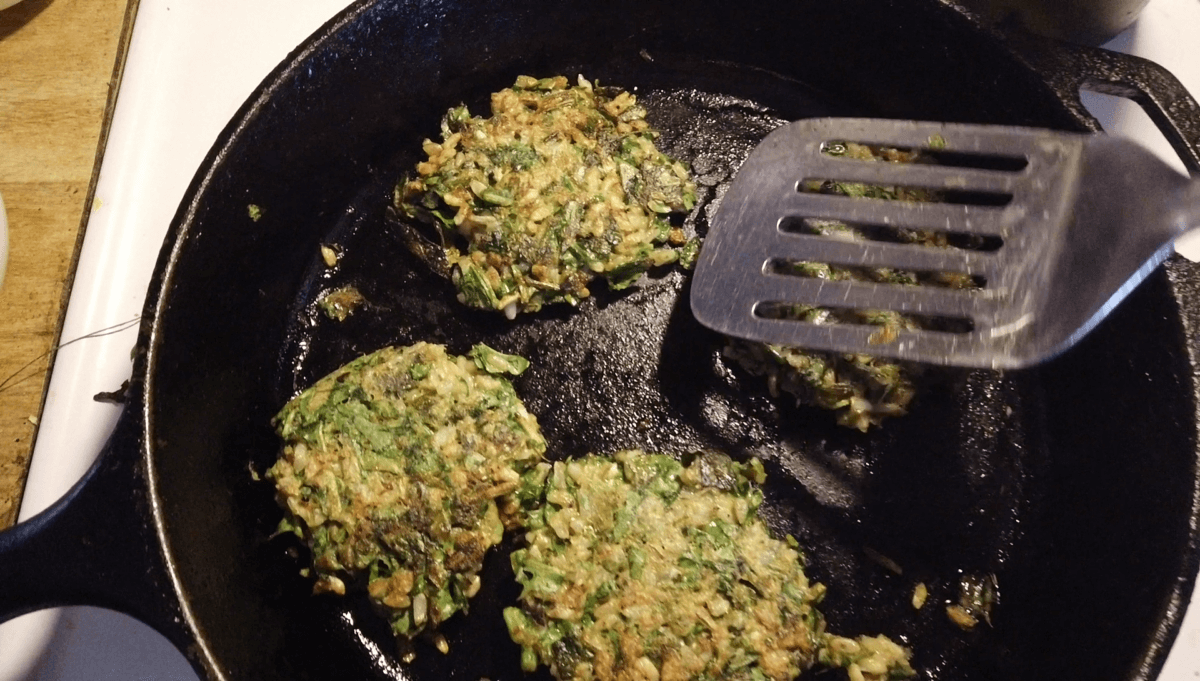
I really should have a more attractive name for these fried fritters of green goodness, but this is the name that stuck on our homestead. These are best made in spring, when the chickens are laying eggs again and the fields are literally bursting with free food. It’s a no recipe, renegade dish where you take what you’ve got and mix in whatever you want till it sticks. Somehow, it always seems to come out well.
Wash whatever greens you have and mince them as finely as possible — the finer the better. Throw them in a bowl and add an egg or two, minced garlic or onions, and seasonings. I often use smoked paprika, salt and pepper, cumin, and cayenne. Then, you can add some leftover cooked grains if desired. Finally, add enough flour to make it hold together into a ball. If you find it’s not sticking well enough, add a bit more flour and more water to get it to glue together.
Heat some oil in your favorite cast-iron skillet and fry burger-sized patties until they are crispy brown on the outside. You may need to press them with your spatula to make sure they hold together. Once done, serve these with cooked grains or sourdough toast, and some mustard.
Fatayer-Inspired Dish
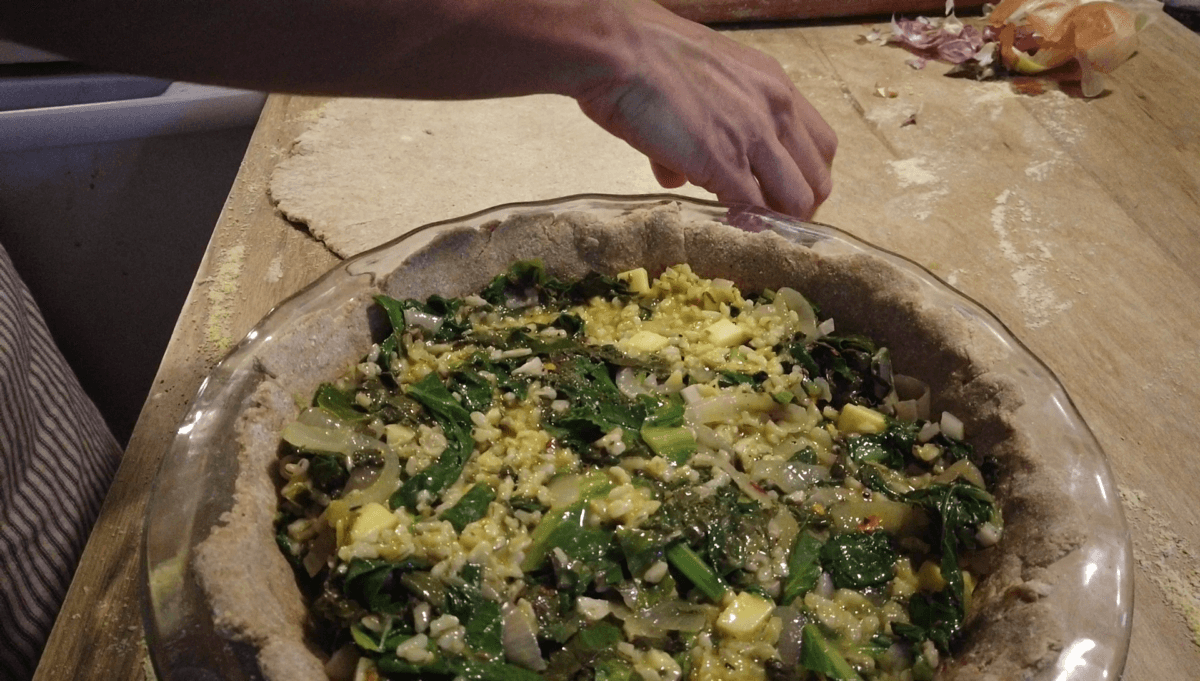
Though I make no claims of authenticity with this fatayer-ish pie, it was my source of inspiration. No matter what you label it, a mess of seasoned greens stuffed into a pastry crust is a brilliant and delicious way to use your wild leafy haul. I like to make both hand pie or full pie-sized pastries.
1. Mix up your favorite pie crust with no sugar, and put half of the dough into your pie pan. Set aside.
2. Then, clean, chop and sauté a big heap of wild greens — as many as you could collect that day. If you found enough to fill the whole pie, perfect! But if the pickings were a little scanty, you can put a layer of mashed potatoes on the bottom of the pie to heartily fill any empty space. And if there happened to be a layer of fresh cheese on top of those potatoes, all the better. Anyway, season the sautéed greens with what spices sound right (I use whole cumin seeds and red pepper flakes). Allow the greens to slightly cool.
3. In a big bowl, whisk your eggs, salt, pepper, and a spoon or two of mustard. Fold in the cooled greens, and mix thoroughly. Add some optional cheese here, if desired. Now, dump that delicious mess into your pie crust and smooth it down.
4. Once the pie is full enough, add the top crust of pastry, pierce it with vent holes, and bake it at 375 degrees Fahrenheit for about half an hour to 50 minutes, depending on how efficient your oven is. You’ll know it’s cooked through when the filling is bubbling out of the vent holes and browning the crust. Served with some roasted potatoes or a tomato salad, it makes a wonderful base for any meal of the day.
Wild Saag Paneer
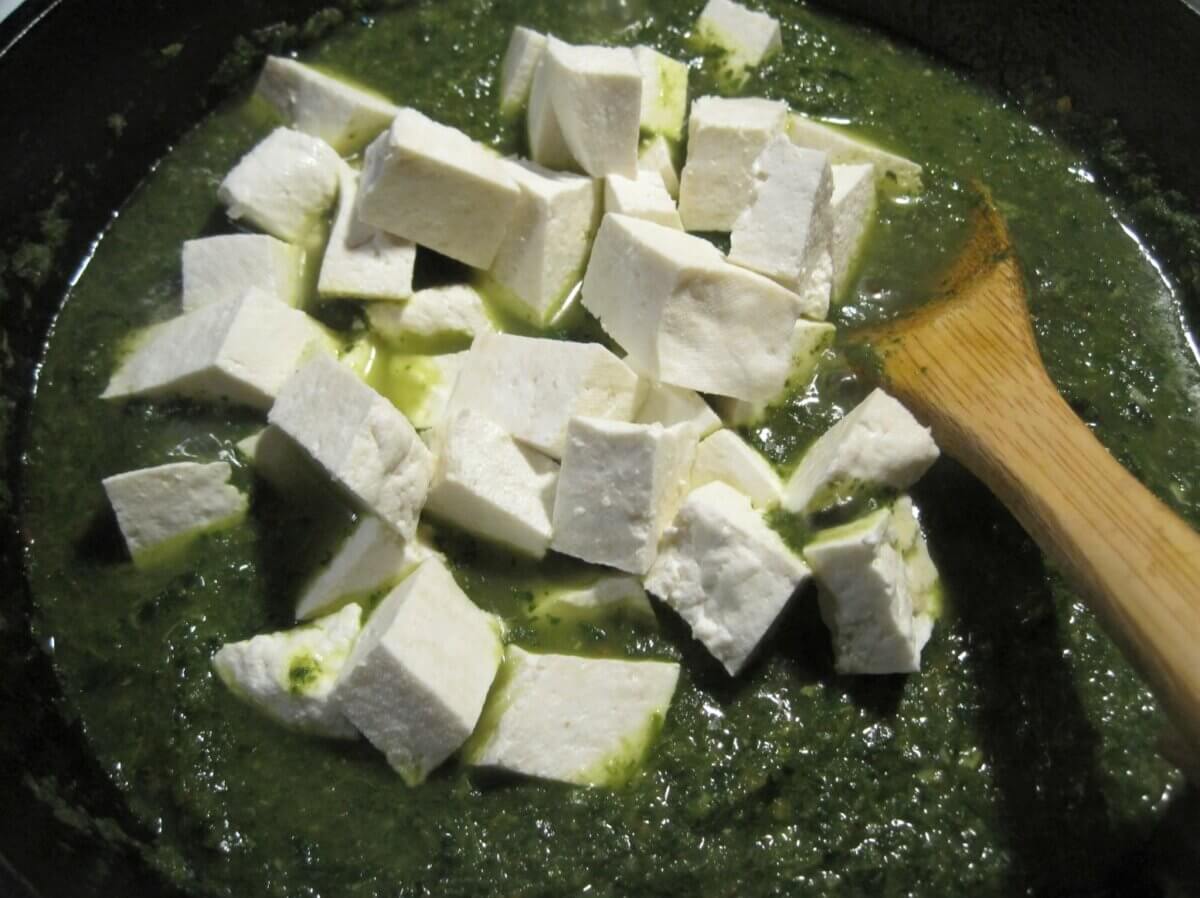
Traditionally, saag paneer is a delicious dish of homemade cheese cubes swimming in a spicy, silky-smooth gravy made of greens. Under that forgiving umbrella, we’re going to make this classic Indian vegetarian dish with whatever wild greens you can find. I try to use the most tender wild greens I can find such as young wild lettuce, the early shoots of wild spinach, parboiled pokeweed, and violet leaves. They aren’t stemmy or strongly veined and will blend into a velvety sauce.
1. First, you need to make paneer cheese. If you’ve never tried making cheese before, this simple recipe is a great way to build up your confidence. Bring half-gallon of whole-fat milk to a boil, take off the heat, add 1/4 a cup of lemon juice or vinegar, give a gentle stir, and let sit five minutes while the curds knit together. Gently ladle out the curds into a cheesecloth-lined colander, then press the curds for an hour or so with a weighted plate to compress them into a solid hunk of delicious cheese. Set that aside for now, we’ll get back to it.
2. Finely mince at least 3 cloves of garlic and a knob of ginger, and sauté them in a large pan. Add 2 teaspoons of whole cumin seeds and a teaspoon of coriander seeds, and 2 (optional) tablespoons of shredded coconut, and continue to stir until the seeds pop. Now, add one diced onion, and cook until the whole mess is a fragrant aroma that has your neighbors sniffing the air and feeling hungry. Throw that stuff in a blender and turn it into a paste, and set aside.
3. Take all your well-washed greens and wilt them in the seasoned pan. Once they have reduced, add them to your blender as well, and blend until as smooth as possible. If you’re making a big batch, you may need to blend the greens and onions separately. Either way, get them all back into the pan and set on a low simmer.
4. Add salt and black pepper and as much hot chili pepper as you want (I like a lot). If you have garam masala, throw in a half teaspoon, otherwise, add a couple of pinches of cinnamon and a tiny pinch of ground cloves. If desired, you can also add a quarter cup of cream, some coconut milk, or some butter to make the gravy even more luscious. Taste and adjust seasonings, and simmer on low.
5. Now, unwrap your pressed paneer and cube. Slide the cheese cubes into the gravy and gently fold them into the fragrant mix to coat and warm.
Serve with rice, and you have a foraged meal fit for royalty!
Shakshuka
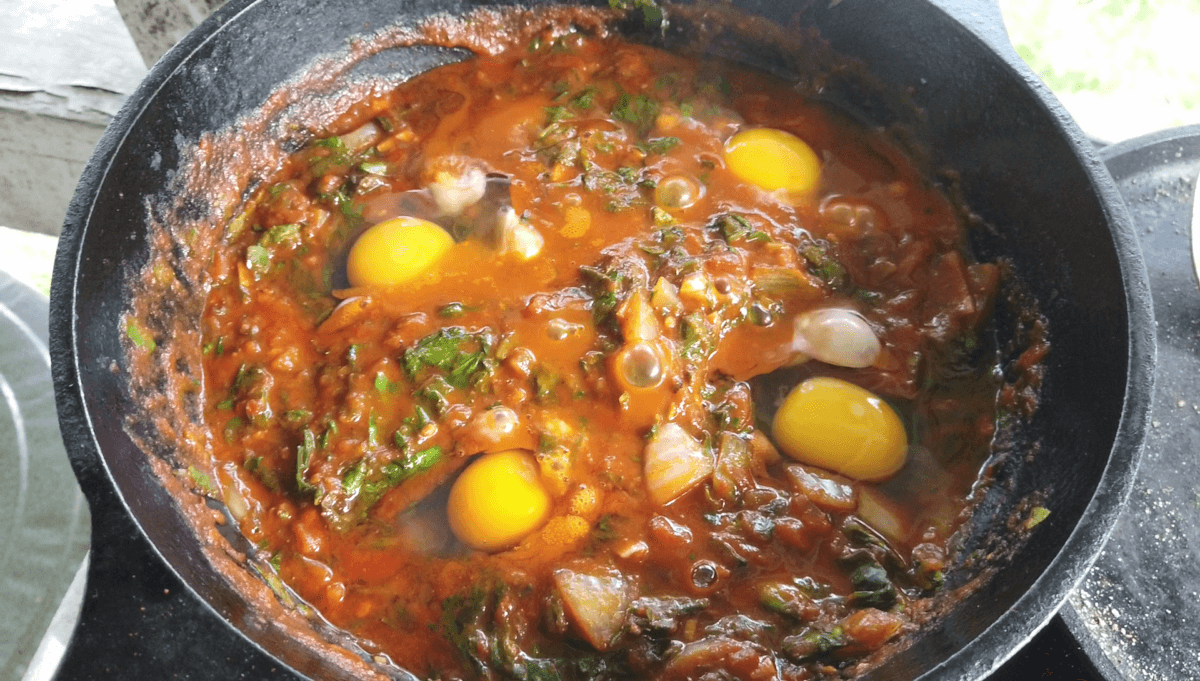
Shakshuka is a classic breakfast (or any meal) popular in Israel, North Africa, and other parts of the Middle East. Traditionally, eggs are gently poached in a flavorful mixture of tomatoes, onions, and spices, but for our shakshuka, some wild greens are also on the ingredient list. You can choose to make a green slurry-like we did for the paneer recipe or to dice up the greens.
1. In a large, deep pan, sauté onions and garlic in olive oil until fragrant and translucent. If you have bell peppers (I didn’t, sadly), add them too. Then add salt, pepper, cumin, and paprika, and coat the alliums evenly. At this point is when I usually add all the fresh herbs from my garden. Oregano, thyme, and garlic leaves are always winners.
2. Next, in go all those fresh chopped wild greens. Once they are nicely wilted, add tomatoes in some form. You can use fresh (though it will take longer to cook), canned whole tomatoes, tomato sauce, or tomato paste. Whatever you choose, set the pan to simmer and cook down until they form a nice, chunky sauce. You want this sauce to be thick enough to hold its shape when you press a spoon into it.
3. Now, create a well in the sauce for every person you’ll be feeding, and carefully crack some fresh eggs into each well. Once they have been cooked to your desired doneness (I like mine on the runny side), spoon out the eggs with a hearty helping of that lovely chunky sauce and serve with a garnish of fresh basil or parsley, a sprinkle of optional cheese, and a side of fresh-cooked flatbread or some good, crusty sourdough. If you manage to make a dish like this over an open fire while camping, you will likely make immediate friends with anyone in your vicinity.
If I’ve done my job right, you should be a bit hungry and a lot inspired to get out there and forage some fresh fixin’s from the field. Of course, these are just some of my homestead favorites for wild greens that absolutely transcend a sad salad fate. If you have any recommendations for different ways to cook wondrous wild weeds, please share them in the comments below.




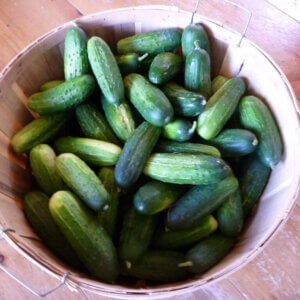
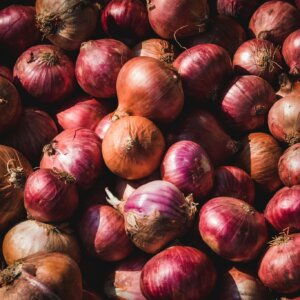











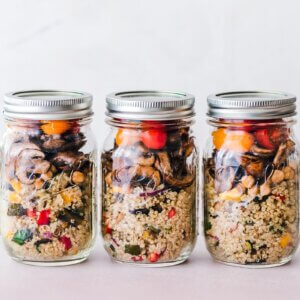


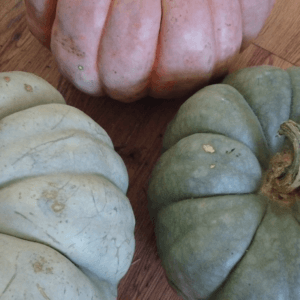




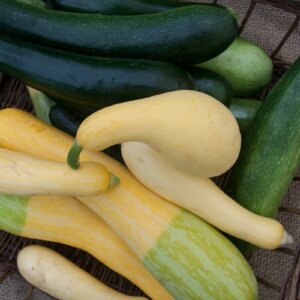





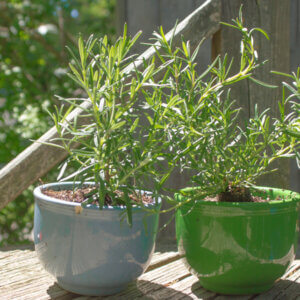









Leave a Reply